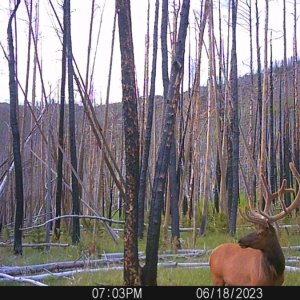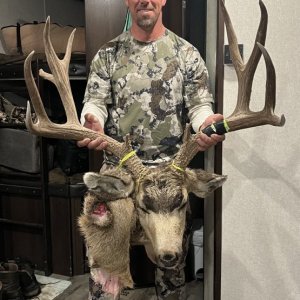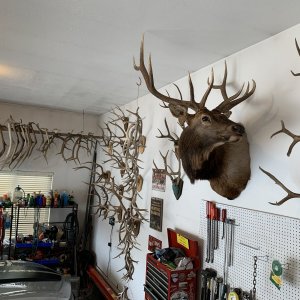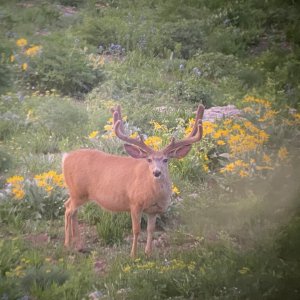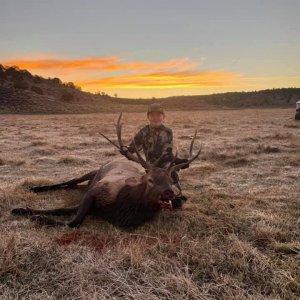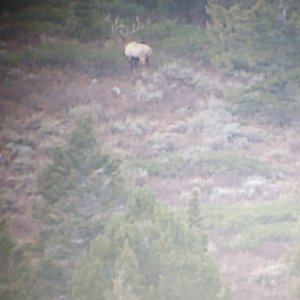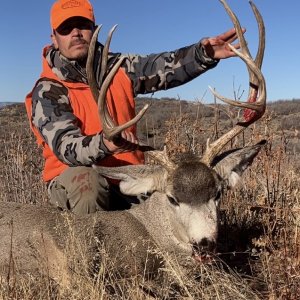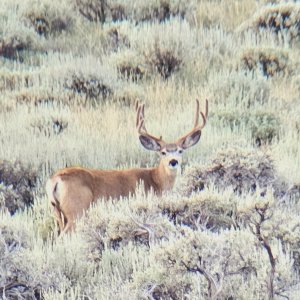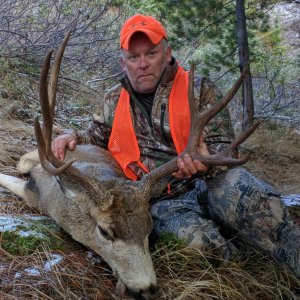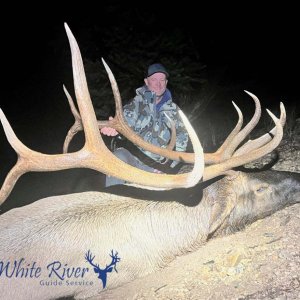PLP, Take this for what its worth because it is based on book learning and not my personal experience. I've been reading Pronghorn: Ecology and Management. It's a textbook for Wildlife Biology students.
Anyway, the authors make the point that there are "territorial bucks" and there are "bachelor bucks". Territorial bucks are almost always at least 3 years old. They will mark out a territory and stay in it during the rut. Territories are typically about 1 square mile (sometimes as big as 3 miles). Bachelor bucks are bucks that have not been able to stake out a territory. They may be younger bucks, but not always. Does have a larger home range (around 5 sq miles)and as they go about their home range the territorial bucks in the area will attempt to herd and keep them on their territory. They will vigorously defend the females and try to drive off bachelor bucks who try to horn in on the action.
I think you are dealing with a territorial buck. You have seen him there a couple times in the same area. Based on what I'm reading I'd be willing to bet he is within a mile of where you saw him. To your point about being able to locate the antelope again, the research seems to indicate that antelope are primarily active during the day. There was some research shared in the book that says (no surprise) that antelope are most active at dusk and dawn and that the amount of time up (spent walking or standing) exceeded reclining and feeding for bucks during the rut. To me this indicates that during the rut you should be able to find him eventually if he is a territorial buck.
The authors share this helpful information as well.
1. territories of bucks in broken and hilly terrain tend to be smaller than in flat areas
2. Exceptions to territorial bucks holding does in the rut occur when the range is poor. In that case does move off for greener pastures and bucks follow and abandon their territory.
3. Frequent intrusion by many young non territorial bucks can cause the territorial bucks to lose control of an area and abandon their territories. Age distribution of males can be dramatically influenced by winter kill (fewer young bucks) or hunting (fewer old bucks)and cause exceptions to territoriality.
I'd be interested to have someone like the Grimmetts weigh in on this because I might have interpreted it incorrectly or it might not jive w/ their experience.

